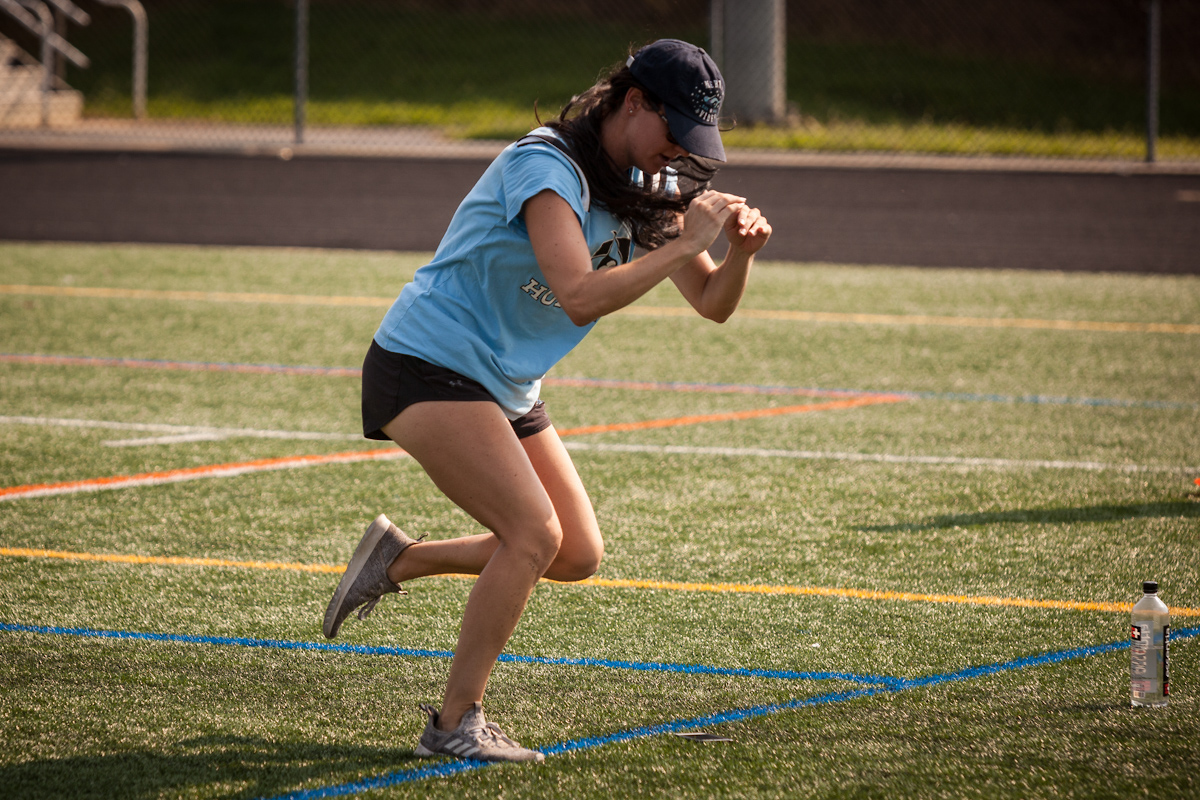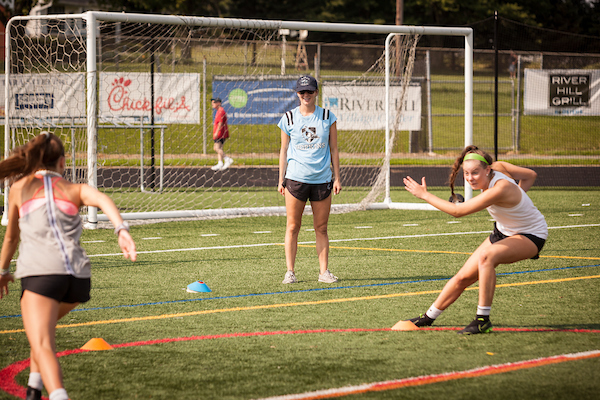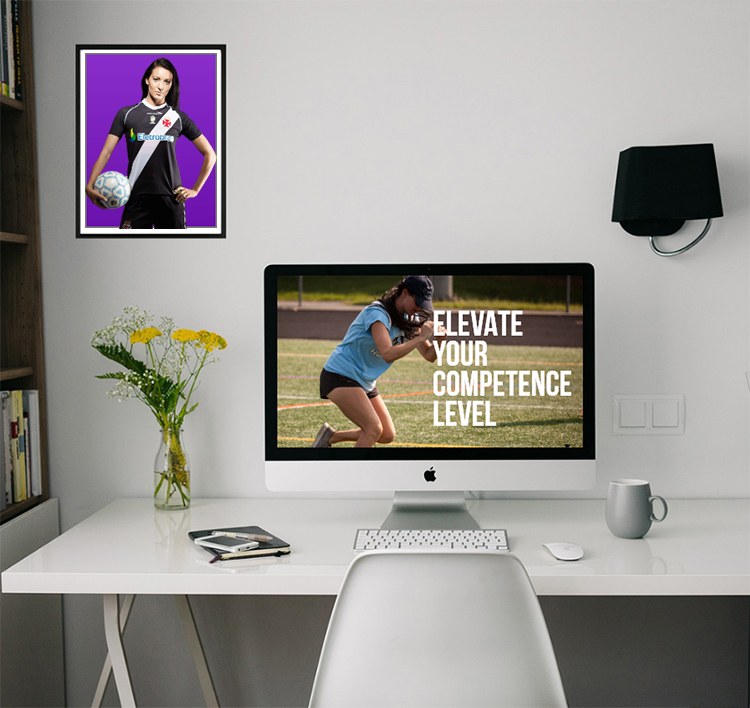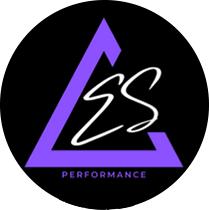
01 Aug The Brain’s Role in Female Athlete ACL Injury
The mind-body connection is paramount to understand for reducing chance of injury in female athletes. If the brain is not trained to react quickly, then the muscles will that safeguard the knee will be behind in their firing capabilities, thus increasing poor lower body kinematics.
More studies are coming out about on this concept – the role of sensorimotor integration in lower extremity injuries amongst female athletes. Sensorimotor integration is defined as the ability to utilize sensory inputs from the external environment to shape motor output in the body. A girl needs to understand how to move her body in space when there are opponents around, decisions to make, and external stimuli to react to and maneuver around in a split second.

The literature is overwhelming, too. Non-contact anterior cruciate ligament—injured athletes demonstrated significantly slower reaction time, processing speed, and performed worse on visual and verbal memory composite scores when compared with controls (Swanik 2007). Another study suggests that errors in judgment or unanticipated stimuli may cause a momentary loss of situational awareness or startle responses, and if the brain’s executive functioning is unable to successfully negotiate the rapidly changing environmental conditions, then the action-planning networks are disrupted and task uncertainty ensues. The subsequent loss of neuromuscular control and inability to optimally regulate knee-joint stiffness diminishes dynamic stability (Swanik 2015). Another study that conducted a review of the ACL risk factor literature from 1951-2011 concluded that ACL-injured patients had significantly slower reaction time as well as slower processing speed. Compared with matched controls, those with ACL injury also displayed significantly lower scores on visual and verbal memory sections and a lower total score (Smith 2012).
The research makes sense. The brain controls all movement actions in the body, so if it is not trained to handle the cognitive duress of competition, it won’t be able to fire the muscle groups needed to perform high intensity movements.
The brain controls all movement actions in the body, so if it is not trained to handle the cognitive duress of competition, it won’t be able to fire the muscle groups needed to perform high intensity movements. Share on XSo how can girls optimize brain function to reduce chance of ACL?
I can make a strong case for early sampling because other sports move girls into a new environment that the brain needs to adapt to and make sense of with new incoming information. The novel environment that isn’t a single sport allows girls to tap into other neurological corners for decision making, and gets them exposed to new objects, basic motor skills, opponents, and body movements.
Take a soccer player venturing into the unknown and playing volleyball, for example. Instead of their head being down or level, they’re forced to pick their head up to react to the volleyball. Oftentimes, coaches and parents nag their girls for being terrible with tactics and search for the solution that is primary sport (soccer in this case). The solution, however, is exploring new territory to get them to track objects, scan their space better, pick their head up, and respond to external stimuli (the volleyball).
Beyond playing a variety of sports, I can also make a potent case for non-traditional agility training to help girls boost brain function. I say “non-traditional” because this is where the majority of coaches screw up. Conventional agility drills are too rehearsed, not progressed enough, and are highly over-coached.
Conventional agility drills are too rehearsed, not progressed enough, and are highly over-coached. Share on XFirst things first, if an agility drill is being coached, it’s not an agility drill. The only piece of agility that should be coached is the skill of change of direction – the deceleration, then re-positioning of the kinetic chain (feet to the shoulders), then the re-acceleration. After this, every adult needs to exit stage right and stop telling girls how to move. The nervous system is incredibly good at self-organizing and putting itself in an advantageous position.
To that end, agility training for female athletes is making them fast movers and fast thinkers simultaneously. It isn’t just setting up cones in various shapes and zig-zag patterns and blowing a whistle while barking orders.
Girls need new stimuli and new thinking environments that are more intense than the game.
Train their brains.
GET THE TOTAL YOUTH SOCCER FITNESS BOOK FOR FUN SPEED AND AGILITY DRILLS HERE
JOIN THE TOTAL YOUTH FEMALE ATHLETE FITNESS MENTORSHIP GROUP, ZOOM MEETINGS AND VIDEO COURSE TO SHARPEN YOUR SKILL SET AS A COACH TO YOUNG GIRLS HERE

REFERENCES
Smith, Helen C et al. “Risk factors for anterior cruciate ligament injury: a review of the literature-part 2: hormonal, genetic, cognitive function, previous injury, and extrinsic risk factors.” Sports health vol. 4,2 (2012): 155-61. doi:10.1177/1941738111428282
Swanik CB, Covassin T, Stearne DJ, Schatz P. The Relationship between Neurocognitive Function and Noncontact Anterior Cruciate Ligament Injuries. The American Journal of Sports Medicine. 2007;35(6):943-948. doi:10.1177/0363546507299532


No Comments